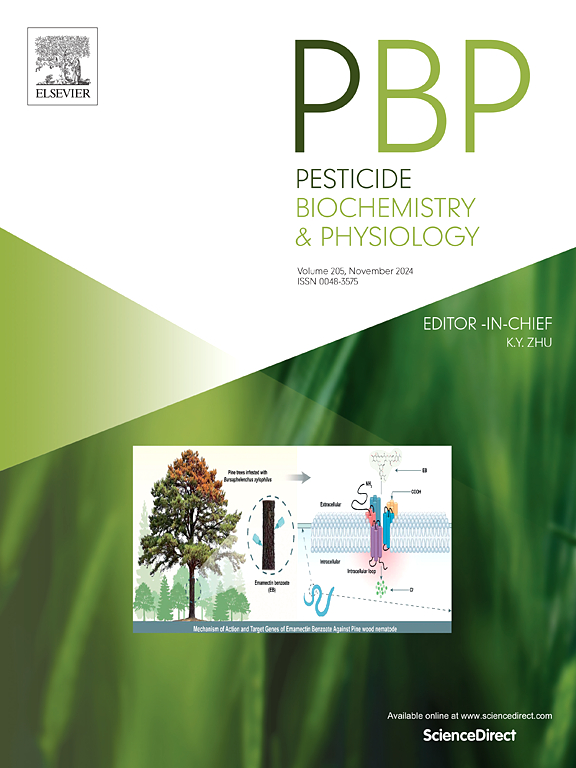Risk assessment of broflanilide resistance in Panonychus citri (McGregor): Cross-resistance, inheritance and relative fitness
IF 4.2
1区 农林科学
Q2 BIOCHEMISTRY & MOLECULAR BIOLOGY
引用次数: 0
Abstract
Panonychus citri (McGregor) is an important economic pest in the orange orchard of the world, which has developed varying degrees of resistance to many acaricides. Broflanilide is a novel γ-aminobutyric acid (GABA) receptor allosteric modulator with high insecticidal activity against a broad spectrum of insects. However, the risk of resistance to broflanilide in P. citri has not been studied. In this study, the BR strain selected from susceptible strain of P. citri with broflanilide for 44 generations, developed 32.5-fold resistance to broflanilide, and did not exhibit cross-resistance to fipronil, fluxametamide, abamectin, pyridaben, and cyflumetofen. Broflanilide resistance in the BR strain of P. citri was autosomal, incomplete dominant and polygenic. The duration of larval and deutonymph, total life span and the number of eggs were significantly increased in the BR strain compared to the SS strain. The higher relative fitness (Rf) value (1.289) indicated that there was a fitness advantage in the BR strain. Glutathione S-transferase and esterase activities in the BR strain were significantly increased compared with the SS strain. These findings provide valuable information for developing resistance management strategies to delay broflanilide resistance and maintain sustainable control of P. citri.

求助全文
约1分钟内获得全文
求助全文
来源期刊
CiteScore
7.00
自引率
8.50%
发文量
238
审稿时长
4.2 months
期刊介绍:
Pesticide Biochemistry and Physiology publishes original scientific articles pertaining to the mode of action of plant protection agents such as insecticides, fungicides, herbicides, and similar compounds, including nonlethal pest control agents, biosynthesis of pheromones, hormones, and plant resistance agents. Manuscripts may include a biochemical, physiological, or molecular study for an understanding of comparative toxicology or selective toxicity of both target and nontarget organisms. Particular interest will be given to studies on the molecular biology of pest control, toxicology, and pesticide resistance.
Research Areas Emphasized Include the Biochemistry and Physiology of:
• Comparative toxicity
• Mode of action
• Pathophysiology
• Plant growth regulators
• Resistance
• Other effects of pesticides on both parasites and hosts.

 求助内容:
求助内容: 应助结果提醒方式:
应助结果提醒方式:


